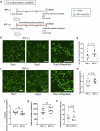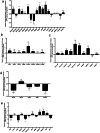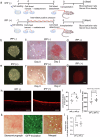Densely vascularized thick 3D tissue shows enhanced protein secretion constructed with intermittent positive pressure
- PMID: 39922952
- PMCID: PMC11807115
- DOI: 10.1038/s42003-025-07627-6
Densely vascularized thick 3D tissue shows enhanced protein secretion constructed with intermittent positive pressure
Erratum in
-
Author Correction: Densely vascularized thick 3D tissue shows enhanced protein secretion constructed with intermittent positive pressure.Commun Biol. 2025 Mar 7;8(1):388. doi: 10.1038/s42003-025-07809-2. Commun Biol. 2025. PMID: 40055552 Free PMC article. No abstract available.
Abstract
Constructing a dense vascular endothelial network within engineered tissue is crucial for successful engraftment. The present study investigated the effects of air-compressing intermittent positive pressure (IPP) on co-cultured mesenchymal stem cells and vascular endothelial cells and evaluated the potential of IPP-cultured cell sheets for transplantation therapy. The results demonstrated that the IPP (+) group exhibited a denser vascular endothelial network and significantly increased cell sheet thickness compared to the IPP (-) group. Furthermore, in vivo experiments showed that IPP-cultured cell sheets enhanced the secretion of Gaussian luciferase by genetically modified mesenchymal stem cells. These findings highlight the IPP method as a technique that simultaneously enables the thickening of planar tissues and the construction of vascular networks. This approach demonstrates promise for fabricating functional, transplantable, and thick tissues with dense vascularization and a high capacity for protein secretion, paving the way for novel applications in regenerative medicine.
© 2025. The Author(s).
Conflict of interest statement
Competing interests: Tokyo Women’s Medical University received research funding from CellSeed Inc. and Tokaihit Co., Ltd. Tatsuya Shimizu is a shareholder of CellSeed Inc. The other authors have no financial conflicts or competing interests to disclose.
Figures









References
-
- Baudequin, T. & Tabrizian, M. Multilineage constructs for scaffold-based tissue engineering: a review of tissue-specific challenges. Adv. Healthcare Mater.10.1002/adhm.201700734 (2018). - PubMed
-
- Kushida, A. et al. Decrease in culture temperature releases monolayer endothelial cell sheets together with deposited fibronectin matrix from temperature-responsive culture surfaces. J. Biomed. Mater. Res.45, 355–362 (1999). - PubMed
-
- Yago, H. et al. The bioengineering of perfusable endocrine tissue with anastomosable blood vessels. Biofabrication15, 045010 (2023). - PubMed
-
- Hoeben, A. et al. Vascular endothelial growth factor and angiogenesis. Pharmacol. Rev.56, 549–580 (2004). - PubMed
MeSH terms
LinkOut - more resources
Full Text Sources

